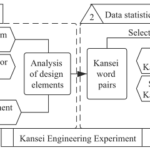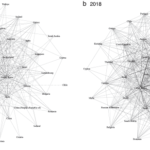
Have you ever wondered how innovative ideas take shape? Picture this: a vast network of converging minds, each contributing a unique perspective. This is the magic of crowdsourcing, a phenomenon where collective wisdom transforms concepts into reality. But that’s just the tip of the iceberg.
Crowdsourcing is an evolving phenomenon, recognized as an effective and efficient mechanism for solving human-driven distributed problems (Bhatti et al., 2020) and a particular form of open innovation aimed at promoting idea generation (Cappa et al., 2019). It serves as a valuable tool for organizations to tackle various challenges.
In this comprehensive guide, we will delve into the depths of crowdsourcing, providing a profound understanding of its definition, applications, benefits, successful examples, and much more. The goal is to equip you with information to initiate your processes of distributed open collaboration.
What is Crowdsourcing?
To embark on our exploration, let’s start with a fundamental question: What is crowdsourcing?
Crowdsourcing (CS), is, in essence, a dynamic approach that harnesses the intelligence, efforts, and collective talents of a diverse group of individuals, typically through an online platform. This collaborative method has gained substantial momentum across various industries, offering a plethora of possibilities for those seeking innovation, funding, or solutions.
Howe (2006) was the first to define crowdsourcing as “the act by which a company or institution takes a function that was once performed by employees and outsources it to an undefined (and generally large) network of people in the form of an open call.”
In this sense, distributed open collaboration involves outsourcing tasks, problems, or projects to a dispersed group, often an online community. This taps into the collective expertise and creativity of the crowd, leading to diverse and innovative outcomes. In this regard, Brem et al. (2023) highlight that distributed open collaboration allows companies to create and capture more value than the company or user could achieve alone.
It is important to note that the scope of crowdsourcing extends far beyond traditional boundaries. From tech giants leveraging it for software development to healthcare initiatives using it for medical advancements, the applications are limitless.
Comparison between Crowdsourcing and Crowdfunding
In the literature, CS is often confused with crowdfunding. Table 1 highlights the key differences between crowdsourcing and crowdfunding in terms of definition, objectives, contributors, types of projects, rewards, common platforms, risks and returns, and the nature of participation. Both approaches offer unique opportunities based on the specific needs and goals of a project.
Table 01. Differences between Crowdsourcing and Crowdfunding.
| Aspecto | Crowdsourcing | Crowdfunding |
| Definition | Involves outsourcing tasks or projects to a broad community to harness collective intelligence. | Involves raising funds from a wide audience, often through online platforms. |
| Main Objective | Obtain contributions, ideas, or creative solutions from a diverse mass of participants. | Raise financial capital for a specific project through individual or collective contributions. |
| Contributors | Can involve individuals with diverse skills and knowledge. | Generally involves the participation of financial investors or individuals interested in supporting the cause. |
| Type of Projects | Applicable to a wide range of projects, from product design to solving complex problems. | Primarily used to fund creative, business, or social impact projects. |
| Rewards | Not always involves tangible rewards; motivation can be intrinsic or based on recognition. | Includes offering rewards to contributors, ranging from exclusive products to personalized acknowledgments. |
| Common Platforms | Includes sites like Amazon Mechanical Turk, IdeaScale. | Notable examples include Kickstarter, Indiegogo, and GoFundMe. |
| Risks and Returns | Less financial risk for participants, as they typically do not invest money. | Investors assume financial risk but also have the potential for returns if the project succeeds. |
| Nature of Participation | Can be collaborative, with people contributing knowledge and efforts jointly. | Mostly involves monetary contributions, with a more passive involvement in terms of direct work. |
Crowdsourcing Platforms: Catalysts of Innovation
The evolution of CS would not be possible without dedicated platforms. These digital hubs serve as meeting points between those seeking solutions and those with the skills to provide them.
From funding initiatives to collaborative idea generation, these platforms are the backbone of distributed open collaboration. Crowdsourcing platforms are increasingly harnessed for creative work (Oppenlaender, 2020).
Some examples of crowdsourcing platforms include:
Amazon Mechanical Turk
Amazon Mechanical Turk is a crowdsourcing platform that facilitates individuals and businesses in outsourcing processes and tasks to a distributed workforce capable of performing these tasks virtually.
IdeaScale: Fostering Innovation
IdeaScale is a versatile platform that facilitates idea generation and innovation. It allows contributors to submit, discuss, and vote on ideas, creating a dynamic environment for creative collaboration. From product development to process improvement, IdeaScale is a powerful tool for leveraging the collective intelligence of the crowd.
CD-CODE
According to Rostam et al., (2023), CD-CODE is a community-editable platform that includes a database of biomolecular condensates based on literature, an encyclopedia of relevant scientific terms, and a crowdsourcing web application. Its aim is to accelerate the discovery and validation of biomolecular condensates and facilitate efforts to understand their role in diseases and as therapeutic targets.
Crowdsourcing Examples: A Glimpse into the Possibilities
Let’s take a closer look at crowdsourcing in action. Notable examples span diverse industries, from crowdfunding projects revolutionizing product development to platforms addressing complex issues like medical diagnosis. These real-world cases illuminate the versatility and impact of distributed open collaboration.
NASA’s Clickworkers: Mapping the Cosmos
Even space exploration benefits from crowdsourcing. NASA’s Clickworkers project engaged the public in identifying and mapping craters on Mars. By harnessing the collective power of citizen scientists, NASA efficiently processed large amounts of data, enhancing our understanding of the Martian surface.
Wikipedia – The Collaborative Encyclopedia
Pioneering in CS, Wikipedia relies on a global community of contributors to create, edit, and maintain its vast knowledge repository. This collaborative model has democratized information, showcasing how crowdsourcing can create a comprehensive and evolving resource.
Foldit – Gamifying Protein Folding
In the field of biochemistry, Foldit stands out as an exemplary crowdsourcing project. This online game challenges players to predict protein-folding patterns, contributing to scientific research. Gamification transforms a complex problem into an engaging activity, demonstrating the versatility of crowdsourcing.
Threadless – Collaborative Fashion Design
Threadless revolutionized the fashion industry by allowing users to submit, vote on, and purchase T-shirt designs. This collective collaboration approach not only leads to unique and modern designs but also enables the community to shape the brand’s product offerings.
OpenIDEO – Collaborative Social Impact
OpenIDEO brings people from around the world together to collaboratively address social challenges. From designing sustainable solutions to promoting inclusion, this crowdsourcing platform demonstrates the potential of collective intelligence to create positive social impact.
Duolingo – Collaborative Language Learning
Duolingo leverages crowdsourcing to continuously improve its language learning platform. Users contribute translations and corrections, creating a dynamic and evolving learning experience. This collaborative model enhances the platform’s effectiveness while fostering a sense of community among language learners.
Airbnb’s Neighborhood Support
Airbnb engaged its community in developing a tool to report and address issues related to disruptive house parties. By leveraging contributions from hosts and neighbors, Airbnb enhances its safety measures, demonstrating how collaboration can drive continuous improvement in the sharing economy.
Benefits of Crowdsourcing
Why has CS become a buzzword in innovation circles? The benefits are manifold. Increased creativity, accelerated problem-solving, and cost-effective solutions are just a glimpse of what crowdsourcing brings to the table.
Wazny (2017) emphasizes that distributed open collaboration can enhance the accuracy of computer-automated tasks, reduce costs, scale up research, transcend boundaries, produce novel discoveries, and speed up research progression, among other benefits.
Meanwhile, Bhatti et al., (2020) indicate that the primary advantage of CS is cost reduction, as the crowdsourcer doesn’t need to set up infrastructure, and workers are always available to perform tasks. Research by Cappa et al., (2019) reports that the framework’s value and investment opportunities result in a positive market response to the announcement of a distributed open collaboration campaign. Thus, crowdsourcing can be part of the business model for startups.
Additionally, Vianna et al., (2020) identified a set of five categories of crowdsourcing applications in Industry 4.0: product development; innovation; supplying data and information for manufacturing; crowdsensing; and problem-solving/solution finding.
Below are some of the key benefits of crowdsourcing:
Enhanced Creativity and Diverse Perspectives
One of the primary benefits of crowdsourcing is the infusion of creativity and diverse perspectives. By tapping into a broad group of contributors, each bringing unique experiences and knowledge, crowdsourcing ensures a rich tapestry of ideas beyond the limitations of individual thinking.
Accelerated Problem-Solving
Distributed open collaboration stands out for speeding up problem-solving processes. Whether tackling complex scientific challenges or generating ideas for creative solutions, the collective intelligence of the crowd fosters rapid ideation and efficient problem resolution.
Cost-Effective Innovation
Traditional innovation approaches can consume many resources, but CS introduces a cost-effective alternative. By distributing tasks to a diverse group of contributors, organizations can achieve innovative results without the high price tag associated with in-house development.
Scalability and Flexibility
CS provides unparalleled scalability and flexibility. Whether addressing a small-scale project or a large-scale initiative, the crowdsourcing model easily adapts to the scope and requirements of your efforts, ensuring optimal scalability.
Community Engagement and Brand Building
Engaging the crowd fosters a sense of community around your project or brand. Contributors become more than passive participants; they become advocates, spreading the message and contributing to the positive image of your organization. This community engagement extends beyond the specific project, creating a lasting impact on brand perception.
Access to Specialized Skills and Expertise
In the extensive network of contributors, you are likely to find individuals with specialized skills and relevant expertise for your project. Crowdsourcing allows you to tap into this knowledge reservoir, ensuring that your initiatives benefit from a wide range of competencies.
Rapid Prototyping and Iteration
Crowdsourcing facilitates rapid prototyping and iteration. With a large and diverse group contributing to the development process, you can quickly prototype, gather feedback, and iterate on your ideas, accelerating the journey from concept to implementation.
Idea Validation and Market Knowledge
Before investing significant resources, CS allows for idea validation and market knowledge. By presenting your concepts to the crowd, you can gauge interest, identify potential challenges, and refine your ideas based on real-time feedback, reducing the risk of investing in untested concepts.
How to Implement a Crowdsourcing Process?
It is well-known that CS innovation and brand loyalty, but many companies struggle to fully harness its potential; in most cases, this is because companies do not adequately plan the different stages of public engagement (Dahlander and Piezunka, 2020). In this context, Bhatti (2020) proposed a framework for the successful implementation of a crowdsourcing process:
- Task Design.
- Task Setup: Task attributes, worker estimation, and task interference.
- Incentives.
- Task Decomposition.
- Select a Crowdsourcing Platform.
- Task Assignment.
- Review of Responses.
- Validation and Reward.
Finally, organizations willing to execute multiple consecutive projects of distributed open collaboration can rapidly enhance their capabilities and even create scalable crowdsourcing services (Füller et al., 2021).
Challenges of Crowdsourcing
Despite the benefits it offers to companies, crowdsourcing presents some challenges. Bhatti et al., (2020) report that distributed open collaboration still faces many challenges due to its openness and lack of reliability. As the entire process takes place online, the crowdsourcer cannot ascertain whether a user is genuine or malicious.
In a similar vein, Chan et al., (2021) emphasize that recent scientific literature on open innovation indicates a growing concern about the quality of crowdsourced ideas. They suggest feedback strategies that managers can use to enhance customer ideation performance in crowdsourcing contexts.
On the other hand, research results from Füller et al., (2021) indicate that organizations often struggle with crowdsourcing projects as they represent a different form of innovation projects requiring additional capabilities and skills. For instance, formulating a crowd challenge, dealing with intellectual property rights, managing the crowd, or integrating the plethora of contributions into innovation projects.
Conclusion: Empowering the Collective Mind
As we conclude our journey into the realm of crowdsourcing, one thing becomes very clear: the power of the collective mind knows no bounds. From redefining innovation processes to democratizing funding, crowdsourcing has become a force to be reckoned with.
The applications of distributed open collaboration span the business field, scientific research, and solving social issues. In this sense, it becomes an excellent tool for organizations to harness collective knowledge to address identified challenges.
However, it is essential to highlight that crowdsourcing presents some challenges that promoters of these processes must consider to foster successful distributed open collaboration processes.
In this article, we have unraveled the complexities of distributed open collaboration and provided a comprehensive guide for curious minds seeking to understand its definition, applications, and benefits. Whether you are an experienced professional or a newcomer to the concept, the world of crowdsourcing invites you to explore, collaborate, and innovate. The journey has just begun.
References
Bhatti, S. S., Gao, X., & Chen, G. (2020). General framework, opportunities and challenges for crowdsourcing techniques: A Comprehensive survey. Journal of Systems and Software, 167, 110611.
Brem, A. M., Tucci, C. L., Brown, T., & Chen, J. (2023). Guest Editorial: The Age of Crowdsourcing and Crowdfunding for Technological Innovation: Where We Are, and Where to Go?. IEEE Transactions on Engineering Management, 70(9), 3015-3020.
Cappa, F., Oriani, R., Pinelli, M., & De Massis, A. (2019). When does crowdsourcing benefit firm stock market performance? Research Policy, 48(9), 103825.
Chan, K. W., Li, S. Y., Ni, J., & Zhu, J. J. (2021). What feedback matters? The role of experience in motivating crowdsourcing innovation. Production and Operations Management, 30(1), 103-126.
Dahlander, L., & Piezunka, H. (2020). Why crowdsourcing fails. Journal of Organization Design, 9, 1-9.
Füller, J., Hutter, K., & Kröger, N. (2021). Crowdsourcing as a service–from pilot projects to sustainable innovation routines. International Journal of Project Management, 39(2), 183-195.
Howe J. The rise of crowdsourcing. Wired magazine. 2006; 14:1-4.
Oppenlaender, J., Milland, K., Visuri, A., Ipeirotis, P., & Hosio, S. (2020, April). Creativity on paid crowdsourcing platforms. In Proceedings of the 2020 CHI Conference on Human Factors in Computing Systems (pp. 1-14).
Rostam, N., Ghosh, S., Chow, C. F. W., Hadarovich, A., Landerer, C., Ghosh, R., … & Toth-Petroczy, A. (2023). CD-CODE: crowdsourcing condensate database and encyclopedia. Nature Methods, 20(5), 673-676.
Vianna, F. R. P. M., Graeml, A. R., & Peinado, J. (2020). The role of crowdsourcing in industry 4.0: A systematic literature review. International Journal of Computer Integrated Manufacturing, 33(4), 411-427.
Wazny, K. (2017). “Crowdsourcing” ten years in: A review. Journal of global health, 7(2).





